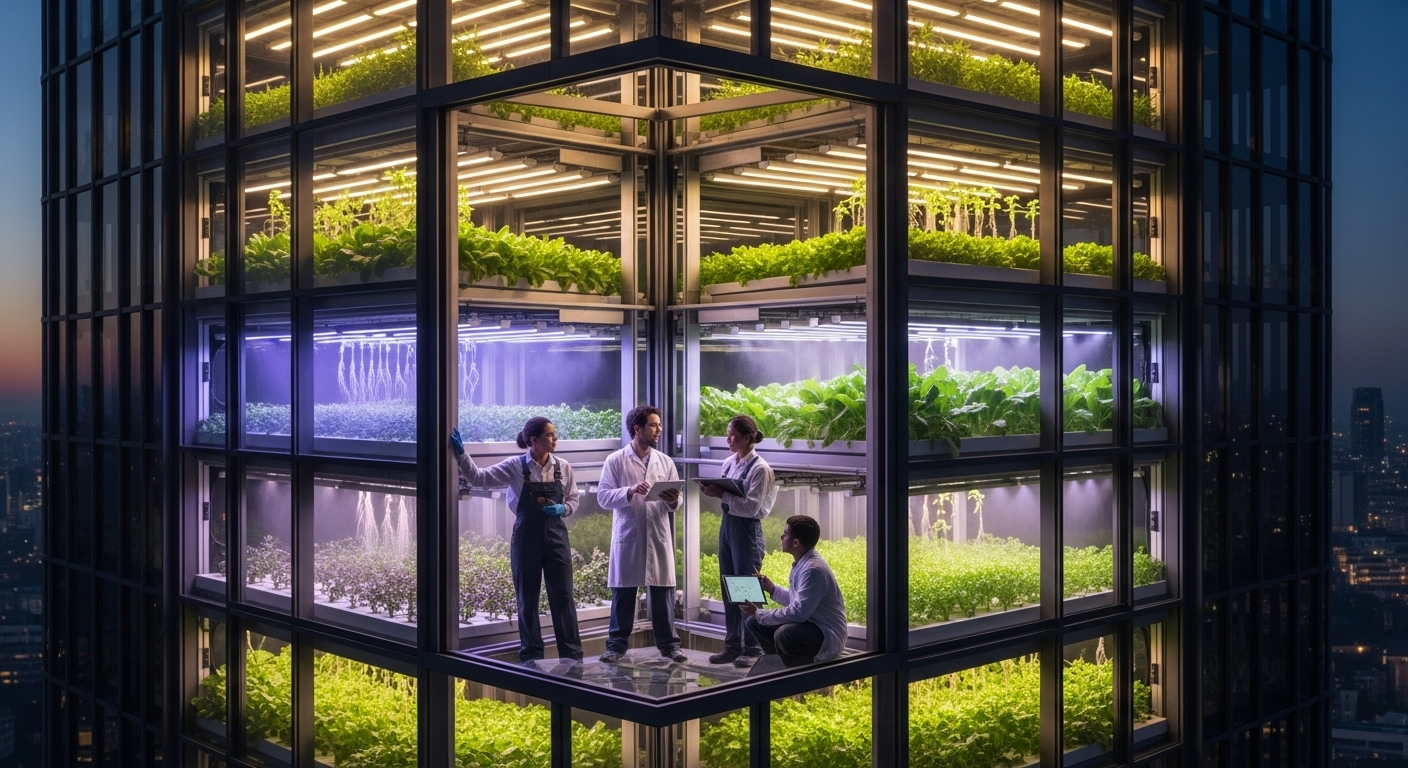Cultivating Industrial Growth - The Potential of Vertical Farming
The world is rapidly urbanizing, and with it, the need for innovative, sustainable methods to feed our cities is becoming increasingly critical. One such solution on the rise is vertical farming - a revolutionary approach to agriculture that promises to transform the way we grow food.

Vertical Farming: A Glimpse into the Future of Agriculture
Vertical farming, at its core, is the practice of producing food in vertically stacked layers, such as in a skyscraper, used warehouse, or shipping container. This innovative method allows for year-round crop production, eliminates agricultural runoff, and significantly reduces the amount of water and land needed for traditional farming.
The concept is not new; it dates back to the Hanging Gardens of Babylon. However, it has gained traction in recent years due to advancements in technology such as hydroponics and aeroponics, combined with the escalating need for sustainable food production methods.
The Rise of Vertical Farming in Today’s Business Landscape
The vertical farming market is experiencing exponential growth, with predictions that it will reach USD 12.77 billion by 2026. This rapid expansion is driven by several factors including urbanization, a growing population, and the increasing demand for organic food.
Moreover, the ability to control environmental variables such as light, humidity, and temperature means that crops can be grown year-round, providing a consistent supply of fresh produce. This consistency has the potential to revolutionize supply chains, reducing the need for long-distance transportation and thus reducing carbon emissions.
The Impact and Challenges of Vertical Farming
Like any disruptive innovation, vertical farming brings both opportunities and challenges.
On the positive side, vertical farming can significantly increase crop yield, reduce water usage, and decrease the need for pesticides and herbicides. Additionally, it can provide local, fresh produce year-round, reducing transportation costs and carbon footprint.
However, there are also significant challenges to overcome. High setup and operational costs, energy consumption, and the need for advanced technological knowledge can be barriers to entry. Furthermore, the industry must find ways to scale effectively while maintaining quality and affordability.
Practical Insights for Industrial Growth: Vertical Farming
-
Vertical farming can be an ideal solution for urban areas with limited space, providing fresh local produce and reducing transportation costs.
-
Implementing energy-efficient technologies and renewable energy sources can offset high energy consumption.
-
Investing in advanced technologies such as AI and automation can enhance crop yield and efficiency.
-
Incorporating vertical farming into city planning and architecture can create a sustainable urban ecosystem.
Conclusion
As the world grapples with the challenges of feeding an increasing population amid climate change and urbanization, vertical farming presents a promising solution. While the road ahead is fraught with challenges, the potential benefits - for businesses, consumers, and the planet - make this an industry worth watching.





